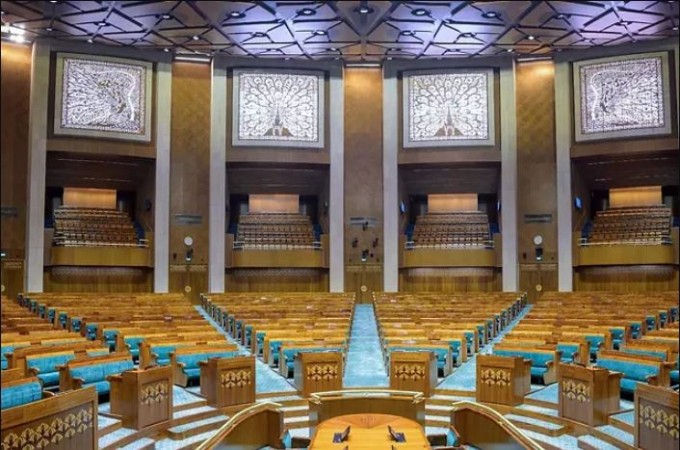
NEW DELHI: In a momentous ceremony set to unfold within the hallowed confines of Parliament's Central Hall today, Rajya Sabha Chairman Jagdeep Dhankhar, Prime Minister Narendra Modi, and Lok Sabha Speaker Om Birla will assume the forefront. This event, expected to span approximately ninety minutes, will be bookended by the resonating strains of the national anthem, followed by a convivial luncheon. Below, we present the top ten highlights of this historic occasion.
After a remarkable service of over 96 years as the epicenter of India's legislative processes, Parliament House now prepares to pass its baton to a newly inaugurated complex, symbolizing the culmination of a momentous era.
On January 18, 1927, under the stewardship of Lord Irwin, then Viceroy of India, this imposing structure was unveiled with grandeur. Over the years, it has borne witness to the epochs of colonial rule, the turbulent backdrop of the Second World War, the dawn of Independence, the promulgation of the Constitution, and the enactment of myriad laws—some celebrated, others steeped in controversy.
In homage to the Parliament's illustrious 75-year history, harkening back to its early days as the Samvidhan Sabha, a special discourse is scheduled during the forthcoming five-day session commencing on September 18.
Prime Minister Narendra Modi inaugurated this new edifice on May 28, expressing his optimism that it would emerge as a central bastion for empowerment, kindling aspirations, and nurturing them to fruition.
Esteemed historians and preservation architects have extolled the old Parliament House as a "guardian of India's historical heritage," embodying an unwavering "dedication to democracy." It is also revered as an "architectural masterpiece" nestled within the precincts of Delhi, according to PTI reports.
This iconic architectural marvel boasts a circular design and a majestic colonnade adorned with 144 exquisite sandstone columns on the first floor. Its inauguration coincided with the creation of New Delhi, designated as the new imperial capital of the British Raj, nestled in the Raisina Hill vicinity. "The Parliament House is not merely an iconic edifice; it is a repository of history and democracy," as acclaimed conservation architect and urban planner AGK Menon conveyed to PTI.
The sandstone utilized in the construction of the new Parliament building hails from Sarmathura in Rajasthan--a source renowned for contributing to Delhi's Humayun's Tomb and Red Fort.
The Ashoka Chakras gracing the interiors of Lok Sabha and Rajya Sabha, along with the Parliament's exterior, were procured from Indore. The intricate lattice work enveloping the new Parliament was sourced from Rajasthan, Noida, and Uttar Pradesh.
Within the Lok Sabha chamber, the verdant Kesharia green stone was procured from Udaipur, while the red granite adorning the Rajya Sabha chamber was acquired from Lakha in Ajmer. The pristine white marble originates from Ambaji.
The stone aggregates used in the construction of the new edifice were procured from Kotputali, and the skilled sculptors responsible for the intricate carvings hailed from Udaipur's Abu Road.
PM Modi Carries on Parliament Special Session Bids Farewell to Historic House
Rajya Sabha Chairman Revamps Vice-Chairpersons Panel with 50% Women MPs
On the special session of Parliament, the Mystery Session starts today